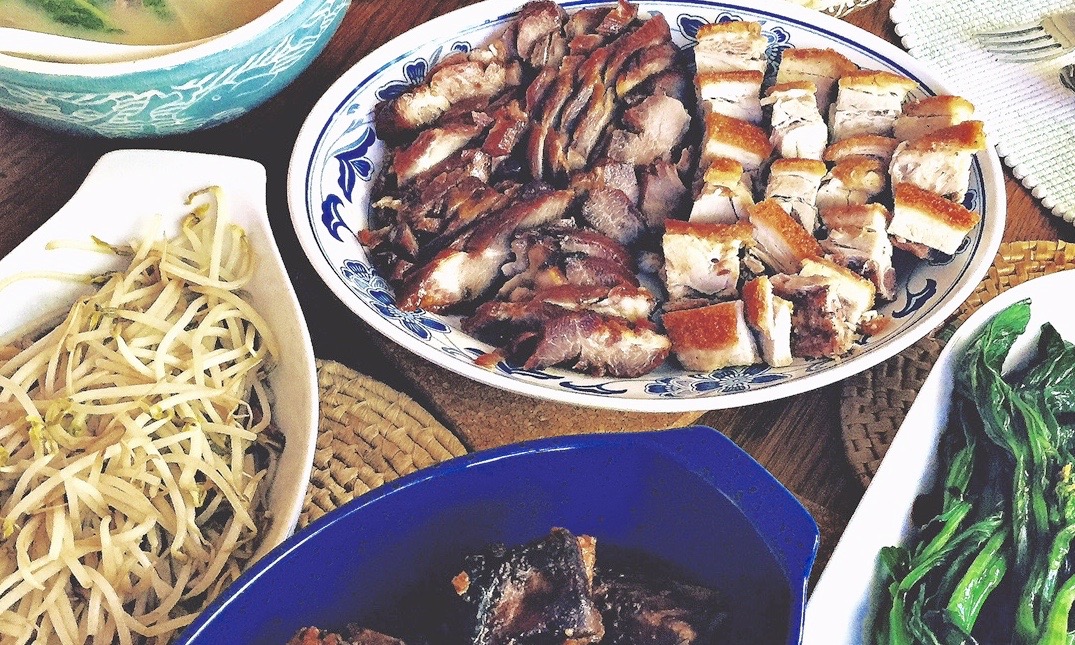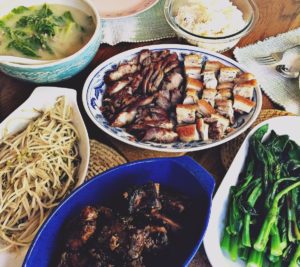
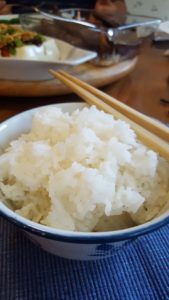 Come, come, join us for dinner! It’s no trouble, we’ll just pull in another chair. Add another bowl of rice. Just something simple, eat with us. Aiyah! It’s no fuss lah! Come! Sit! Eat!
Come, come, join us for dinner! It’s no trouble, we’ll just pull in another chair. Add another bowl of rice. Just something simple, eat with us. Aiyah! It’s no fuss lah! Come! Sit! Eat!
In typical traditional Chinese hospitality, this is the way our old folks used to cajole reluctant guests to join our family dinner. Well, I’m that old folk now. And last night, my friends Elaine and Loretta needed that nudge.
It is common politeness for Chinese people to decline an impromptu invite to join a family for a meal. I’m not referring to the pre-arranged, more “formal” let’s go out for dinner, or come for dinner on such-a-such a day kind of invite. I’m talking about a very casual, last-minute inclusion of a friend or relative who is nearby or visiting to your family meal.
I remember those days when our aunties or uncles (friends, not necessarily real blood relatives) would come and visit Popo, my grandmother. Visiting older relatives and friends is one of those customs that I witnessed as a child. It’s a Chinese version of how the people in the days of Jane Austen lived. Typically, they’d bring some fruit or snacks with them and then catch up on news and gossip. They’d enjoy chatting for hours, often staying near dinner time.
For the guest to accept that kind of invite instantly and enthusiastically would be poor Chinese manners, even today. It’s polite to refuse two or three times. This is not consider ungracious; you don’t want to appear hungry, or to inconvenience your host by joining their family meal.
As a child I’ve watched with curiosity how Popo’s invite would be received. Back and forth, back and forth. The comments above is typical. I’ve also seen this with my Chinese friends in Taipei, in Hong Kong and in Guangzhou. It’s funny.
Our response as host is to put our guests at ease that they have not made more work for us. So it’s also typical that you don’t have to make a big fuss about cooking. To convince my friends to eat in I said I had ribs I needed to cook anyway, leftover from Peking Duck that I’d wanted to make soup. I had a few different veggies I could do something with.
Yesterday I added I’d buy roast meat, implying no extra work for me. It was agreed! They’d love to come. My first invite went out late morning and the second mid afternoon. See above for the final dinner. Below, Slow Cooker Ribs in Black Bean Sauce (recipe here), Duck Soup (recipe here), Yau Choy Blanched Chinese Vegetables (recipe here).
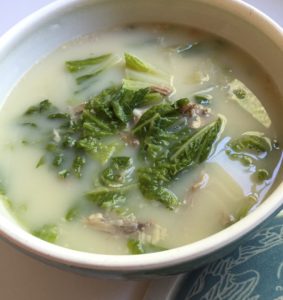
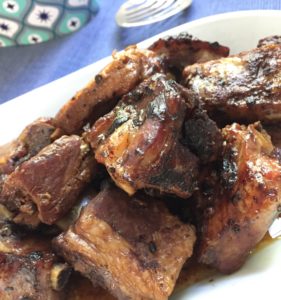

NO FRILL ENTERTAINING
So–this brings me to share how to entertain traditional Chinese style without much fuss . These are some short cuts that we home cooks adopt all the time for last-minute guests. Wink, wink, you can totally do this for easy hosting.
ADDING ONE DISH
For starters (no pun intended), Chinese meals for additional diners are not calculated by making more of the same thing. In a western meal a family of four may, say, have four chicken breasts as the main. And when there are six diners, you will cook six chicken breasts.
Not so in Chinese entertaining. The size of the dish doesn’t get much bigger when cooking for more. Instead, for each additional person we add one more dish. For instance, at home or in a restaurant, a Cantonese family of four typically would have for dinner three or four different dishes, and rice. If you have six people, you may have five or six dishes. Hence a banquet table of ten has a ten-course dinner. That is why we find it very odd when a group of westerners each order the same fried rice, or chicken with broccoli, when eating together.
As well, a good cook balances the meal, offering a variety of meat or fish, or vegetables. The styles of cooking should also be varied–a stir fry, a deep fry, a steamed dish, or a braised dish, and a soup. Visually, the colors should also be varied. Let me see, did I pass the test? I had roasted meat, a braised pork, stir fried vegetables, blanched vegetable and soup. Hmm, I didn’t even think of it then. A little heavy on the pork side, but not bad.
That is why at home in a more casual way when one person is added at the last moment, you literally could add just one more seat for them, and merely dish out one more bowl of rice. If you have fewer dishes each person would then eat a little less of each dish. Eat rice! Or sik fan!, the Cantonese equivalent of bon appetit!.
EGG
Home cooks can easily find something in their pantry or fridge to cooking up instantly. The best and most common standby is fried egg. Eggs quickly scrabbled with tomato and onion is easy. We could also add preserved radish (cai bu), or ham, or shrimp, if you happen to have shrimp.
TOFU
I also sometimes make a quick Steamed Tofu, as I often have vacuum-packed tofu in my fridge. Microwave tofu, add seasoning on top and garnish with spring onions, pork floss, or fried onions.
If you have Chinese sausage, you can also chop them in pieces, throw them in your rice as it is boiling to add another dish.
TAKEOUT
The most popular short cut taken by Cantonese is to buy roasted meats–roast duck or siu ngap, roast pork, char siu (roast pork shoulder) and siu yoke (roast belly pork). That’s three different dishes which means, you can bring in four more guests! We Chinese love these roast meats and very often have them in our home cooked parties. Served at room temperature, we can buy it at mid afternoon, and it can wait on the counter until dinner time.
In Guangdung province, Hong Kong and the Chinese diaspora, shops selling these roasted meats are everywhere. When the markets are closed after noon, these great foods are sold in restaurants as well.
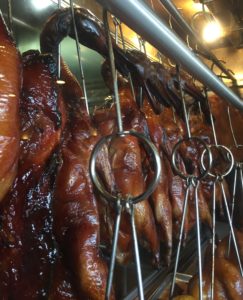
In the DC metropolitan area, we can get these roast meats in the local Chinese supermarkets. As well many Cantonese restaurants in Rockville, MD, and northern Virginia also offer them. You see it displayed in the store. My favorite duck (pictured left) is from Mark’s Duck in Seven Corners, Va, where I bought my two
different kinds of roast pork (pictured in the center, top photo) yesterday.
And then you’re set. Pull up more chairs. Then just add one or in my case last night two bowls of rice. Come. Sit. Eat.
